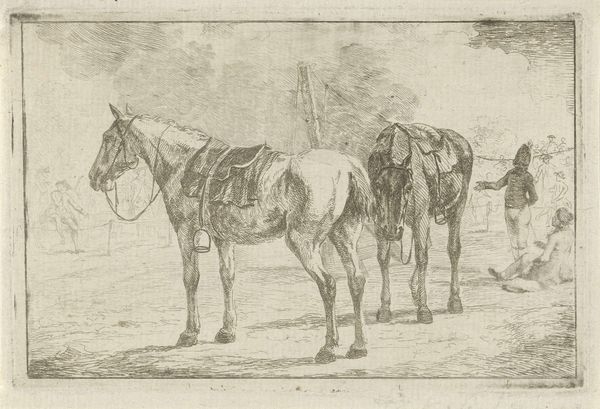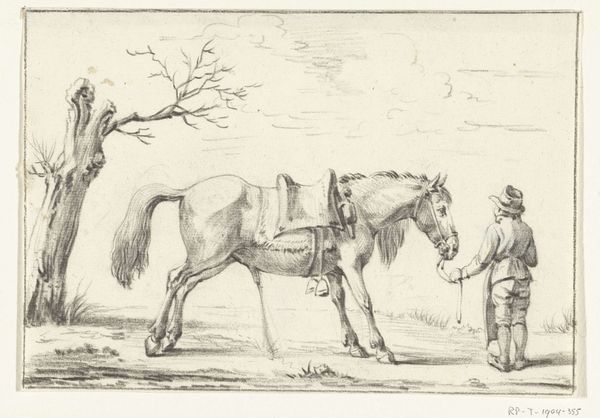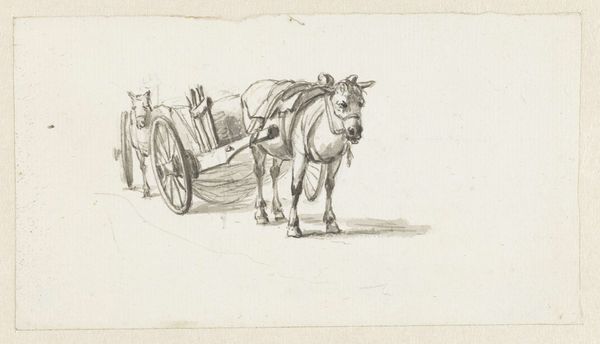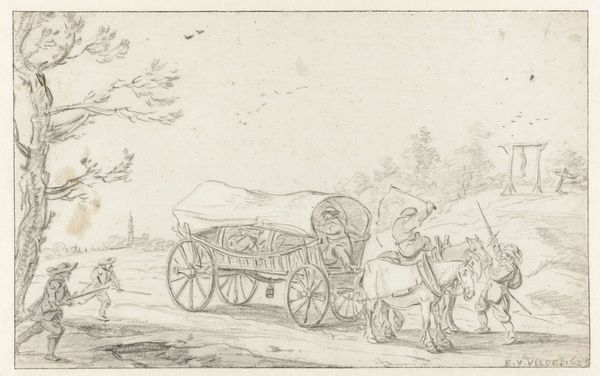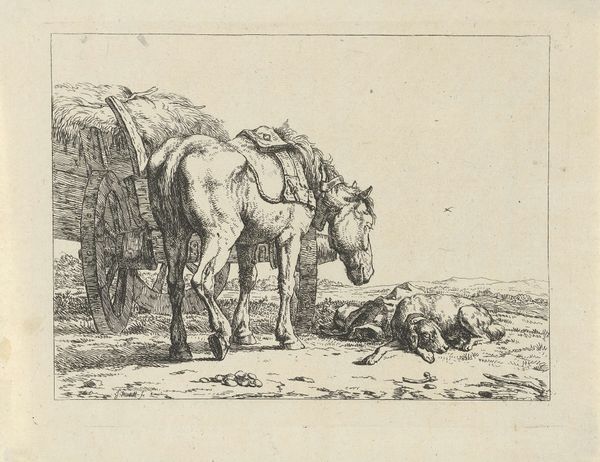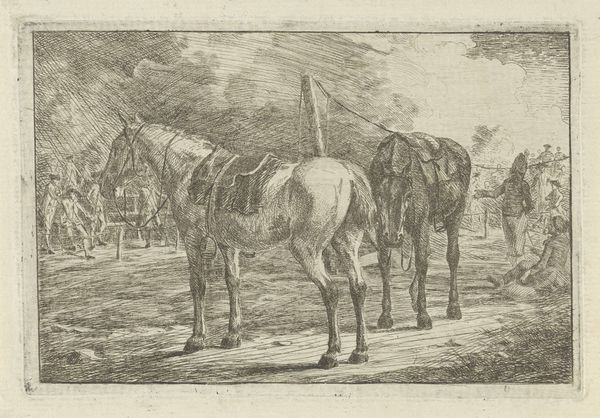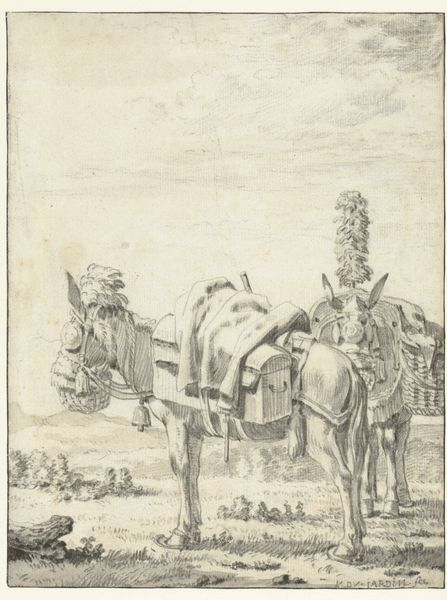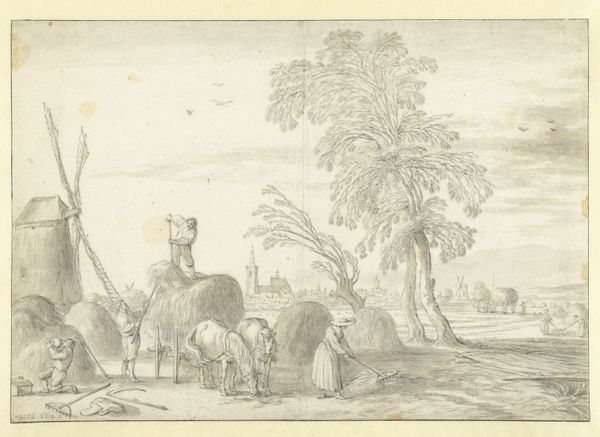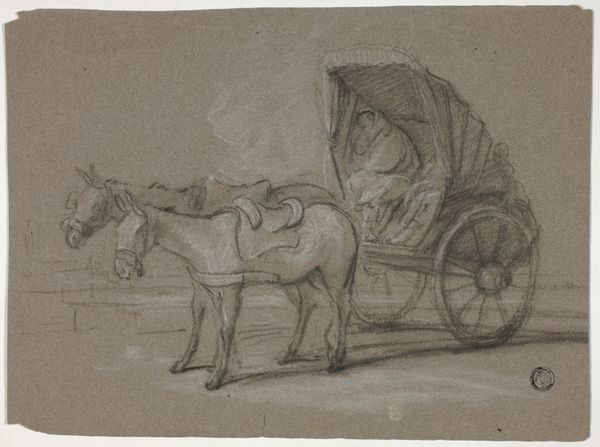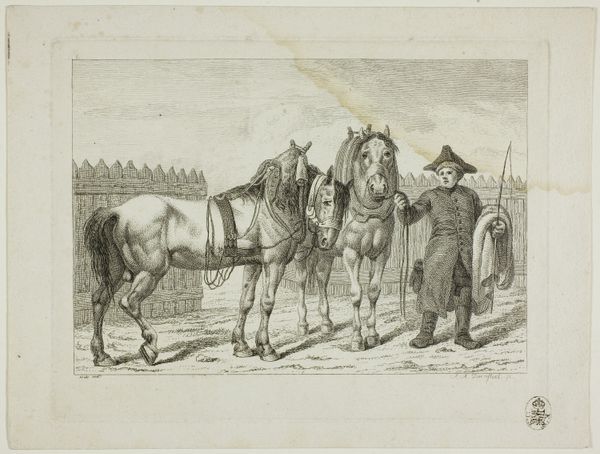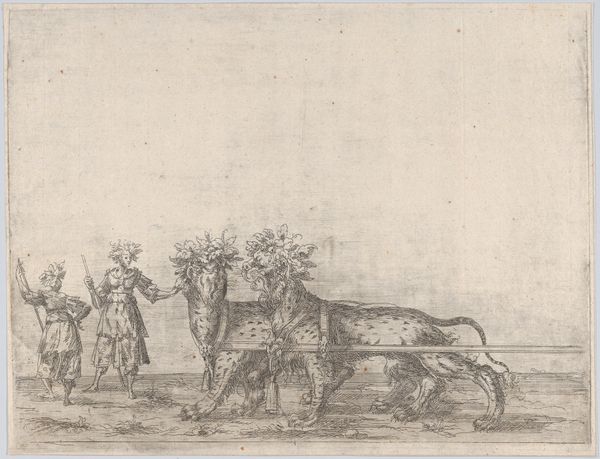
drawing, ink, pencil
#
landscape illustration sketch
#
drawing
#
light pencil work
#
quirky sketch
#
landscape
#
personal sketchbook
#
ink
#
sketchwork
#
ink drawing experimentation
#
romanticism
#
pencil
#
sketchbook drawing
#
watercolour illustration
#
storyboard and sketchbook work
#
sketchbook art
Dimensions: height 161 mm, width 290 mm
Copyright: Rijks Museum: Open Domain
Editor: This is "Twee paarden met kar," or "Two Horses with Cart," an ink and pencil drawing by Jan Brandes, made sometime between 1788 and 1808. It has this kind of wistful, rural quality... what stands out to you? Curator: Well, it strikes me as a visual document deeply embedded in its socio-economic context. Consider the late 18th century. This wasn't just a picturesque scene; it was labor. Look at the implied relationship between humans, animals, and the land. How does this image speak to the politics of labour, particularly within rural communities during that era? Editor: Politics in a landscape drawing? I wouldn't have thought of that. Curator: Think about it. Brandes, through this seemingly simple sketch, implicitly acknowledges the reliance on animal labor that fueled agrarian society. The "romantic" feel might be a softening, or even a commentary on the hardships of rural life. Does the cart appear full or empty to you? Editor: Empty, I think. Maybe that adds to the wistful mood. A sense of things *not* being abundant? Curator: Precisely! Consider the empty cart as a potential symbol of scarcity or the pressures on rural livelihoods at the time. It's not just a charming scene; it's a glimpse into the social fabric of the period. The lack of detail almost feels like an erasure, doesn’t it? Editor: I see your point. I hadn't considered how even seemingly straightforward landscape drawings can be read through a critical, socio-political lens. It changes how I appreciate art, seeing it as connected to broader historical forces. Curator: Exactly! By viewing art as entangled with politics and lived experience, we unlock new depths of meaning and appreciation.
Comments
No comments
Be the first to comment and join the conversation on the ultimate creative platform.
